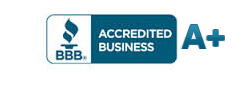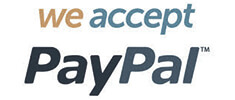ALARM MONITORINGAlarm monitoring is a service provided by a security company, or central monitoring station, whereby a commercial building or residence is remotely monitored using an advanced network of alarms and detectors. In the instance of a fire, burglary, gas leak, or a medical emergency, an alarm is triggered, sending a signal to a team of trained operators who then alert police, fire, or emergency personnel if necessary. (DGA) A detailed report of all incidents are then automatically filed in a corporate database.
The advent of the internet and new technologies have helped the alarm monitoring system industry see tremendous growth over the past decade. Highly-sensitive detection technologies are now able to monitor and detect a multitude of safety hazards simultaneously, including intrusion, fire, flood, as well as harmful radiation, carbon monoxide (CO), combustibles (methane, propane, hydrogen) and toxic gases. Automated alarm receivers retrieve and analyze transmitted protocols using central-monitoring software. Digital transmission and internet connectivity have helped pave the way for increased efficiency and protection for customers in recent years. However, this highly-advanced system of 24/7 remote monitoring came from much humbler beginnings.
In 1851, an affluent doctor named William Channing convinced the city of Boston to install a newer public alarm system, which employed a series of call boxes, or pull boxes, connected by a network of telegraph wires. The call boxes allowed the public to alert the city fire department as to the location of a fire. ( http://www.nfpa.org/~/media/Files/proceedings/firealarmsystemresearchwmoorekeynote.pdf )
While Channing's system was being implemented, a Unitarian minister living in the Boston suburbs, named Augustus Pope, developed a burglar alarm utilizing Farmer's remote alarm invention. Recognizing the profitability of these new burglar and fire alarms, Pope and Channing's patients were subsequently bought up by two entrepreneurs: Edwin Holmes and John Gamewell, respectively. Holmes began selling burglar alarms in Boston, but consumer skepticism regarding electric alarms in households led to poor sales. As a result, Holmes decided to move his company to New York City, which had garnered a reputation for burglary and crime. This proved to be a strategic victory for Holmes because his business soon picked up as the demand for his home alarms rose. By 1877, the Holmes Burglar Alarm Company established the first central station in New York City. Now, an entire network of alarms could be monitored from a single location, thus offering local businesses and homes an even greater level of security. (IFPO (10 March 2010). The Professional Protection Officer: Practical Security Strategies and Emerging Trends . Butterworth-Heinemann. pp. 90. ISBN978-1-85617-746-7. Retrieved 2 September 2011. )
Holmes would later go on to become president of the Bell Phone Company.
http://www.nfpa.org/~/media/Files/proceedings/firealarmsystemresearchwmoorekeynote.pdf
Alexander Ross developed the very first electric device for fire detection in 1863.
III. EARLY 1900s
As multi-signal call boxes became more common, remote monitoring stations could keep an even closer eye on public safety. During this time, watchmen, or roundsmen, were employed by businesses to send scheduled signals to the monitoring station. If ever a scheduled signal was missed, emergency personnel were immediately sent to the site. IV. 1930s 1970s: Technological Innovation This period saw a wave of new safety regulations and technological advancement in alarm monitoring and detection. Early 1940s The ionization smoke detector is invented in Switzerland. It has an open ionization chamber that can detect smoke particles in the air. Early 1950s Samuel Bagno invents the motion detector. 1951 The ionization smoke detector is introduced to the U.S. 1959 The Committee on Fire Research's fire safety tests conclude that smoke detectors are safer than heat detectors in schools. 1968 - Fire Research and Safety Act authorizes the creation of a fire research and safety program 1970s Faster computer technology helps store, process, and transmit information more efficiently. The first solid-state device is invented. V: SECURITY FOR THE NEW AGE
Today, internet technology has completely revolutionized the way security systems collect and transmit information. Alarm monitoring systems are more prevalent and effective than ever before. Networks now employ motion detectors, cameras, glass-break detectors, and gas detectors to provide safety solutions to commercial facilities and residences. Digital imaging and hi-speed networks make live video monitoring possible for any user who can afford the service. Sophisticated detection equipment can sense environmental changes faster than ever before. http://www.alarm.pro/stats.htm
( http://www.kmvideo.com/utcfs/Templates/Pages/Template-54/0,8063,pageId%3D1171%26siteId%3D376,00.html )
VI. STATISTICS: A home in the U.S. is burglarized every 14.4 seconds; once every minute in the U.K. Areas with larger populations have higher per capita burglary rates $4.78 billion is lost every year in America due to burglaries Homes with security systems in place are half as likely to be broken into 74% of uncompleted burglaries are attributed to audible alarms $92 million worth of merchandise is stolen from U.S. retailers every day In the U.S., a commercial robbery occurs about once every four minutes According to STAT Resources, Inc., 90 percent of police officers believe that alarms deter burglars from entering a house. |






 However, Channing's system (and all other previous systems) had a problem. It couldn't remotely trigger the fire station bells, which were rung to signal a fire. This problem was quickly solved by electrician, Moses Farmer, who implemented an electromagnet that could ring a bell by breaking and completing a circuit. (inventors)
However, Channing's system (and all other previous systems) had a problem. It couldn't remotely trigger the fire station bells, which were rung to signal a fire. This problem was quickly solved by electrician, Moses Farmer, who implemented an electromagnet that could ring a bell by breaking and completing a circuit. (inventors)
.jpg)
